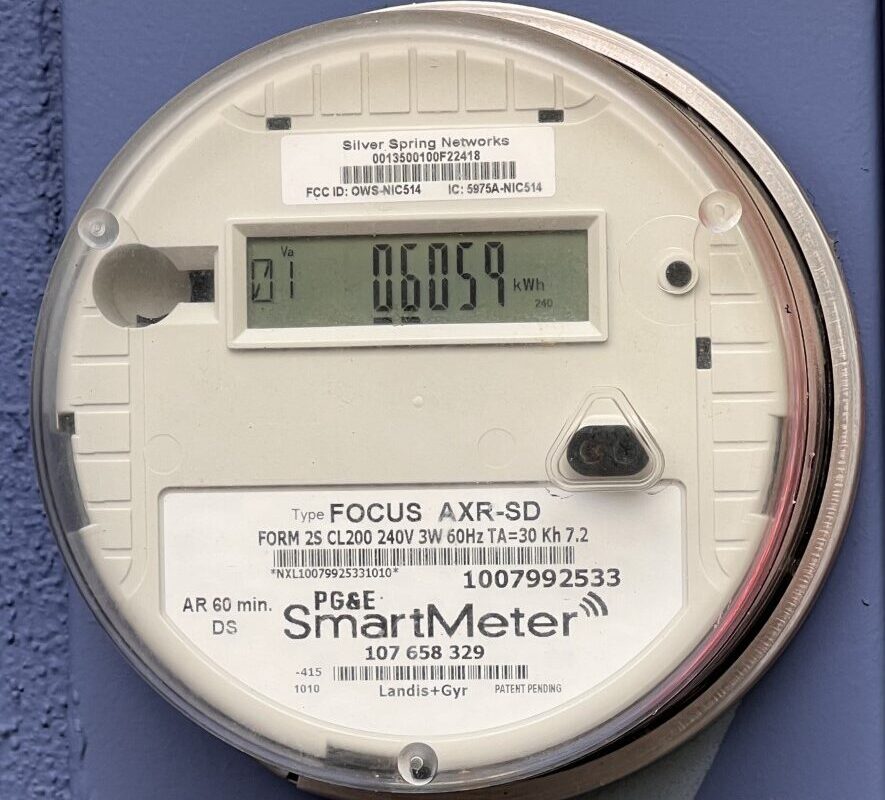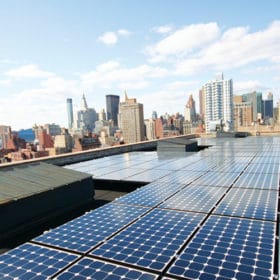The world will need 5.2TW of solar power generation capacity by 2030, and 14TW by mid century, to have any chance of limiting global average temperature rises this century to 1.5 degrees Celsius, the International Renewable Energy Agency (Irena) said today.
The Abu Dhabi-based international body launched the latest edition of its World Energy Transitions Outlook report at the Berlin Energy Transition Dialogue event and director-general Francesco La Camera, writing the foreword, spelled out: “Progress across all energy uses has been woefully inadequate.”
The world will have to install 450GW of new solar capacity each year – most of it utility scale – for the rest of this decade, with China and India to lead Asia to a roughly half share of the world’s installed PV capacity in 2030, the report’s authors estimated.
What is needed
Elsewhere, North America will need to install 90GW per year of solar to claim a 14% share of the world’s operating panels at the end of the decade, and Europe’s 19% slice of the pie will require 55GW of annual solar capacity additions.
European funding will also help North Africa make its contribution to the 70GW of annual solar capacity additions which will be required across the Middle East and Africa with European energy demand ensuring grid connections with North Africa flourish.
To have a hope of avoiding the worst effects of climate change, Latin America will need 20GW of new solar annually this decade and a further “more than 2GW” will be needed each year across the Oceania and Pacific region, the Irena report estimated.
Of course, it is not just solar that the world needs and, with the 348-page report calling for massive electrification and energy efficiency efforts, enabled by the full suite of clean energy sources, hydrogen, and biomass, we will have to start devoting $5.7 trillion per year to the energy transition for the rest of the decade, according to Irena.
That can be feasible if the $700 billion per year channeled into fossil fuels is immediately diverted to the transition, the publication stated. Public investment in the transition will have to immediately double, too, said Irena, to attract the remaining money needed from the private sector, which would bear most of the financial burden.
Jobs
In return for the investment sought – including to ensure there are 147 million electric vehicles (EVs) per year hitting the roads in 2050, that $131 billion is invested annually in EV charging by that point, and that 350GW of green hydrogen electrolyzers are operating as early as 2030 – the world can anticipate a jobs dividend.
Irena has estimated the 12 million job losses it anticipates in the fossil fuel and nuclear industries will be comfortably outweighed by “close to” 85 million new energy-transition roles this decade, including 26.5 million in clean energy.
It is all a matter of political will, Irena pointed out, with policymakers also needing to usher in sufficient international grid connections and flexibility; training; utility scale batteries; electricity demand-side management; digital tools; peer-to-peer power trading; community ownership of renewables; time-of-use energy tariffs; and net billing systems.
This content is protected by copyright and may not be reused. If you want to cooperate with us and would like to reuse some of our content, please contact: editors@pv-magazine.com.









Where will we find all the copper that will be required to carry out that huge task?? Aluminium , too..
The Pebble mine in Alaska holds 50-80 million tons of copper or 100-150 billion pounds.We are blocking the mine for lesser reasons no matter how good they sound. Hard decisions !
Innumeracy will be the death of us all! Before we throw in the towel, let’s just work this out back-of-the-napkin style….
Let’s assume an additional 4.2 TWp to make the 2030 target over the next eight years. If 80% of that is utility scale then it’s safe to assume at least an average of 500 Wp per panel, or 8.4 billion panels required. Let’s assume these are 2.3 m^2 panels with an average weight of 30 kg. The internal coppper connects in PV panels are about 1% by panel weight (absent framing), or about 600 g per panel. The internal aluminum connects are close to negligible, but we should estimate perhaps 5 kg per panel.
So we’re talking about 600,000 tonnes per year of copper consumption (vs 20 million tonnes per year of global production) and 5 million tonnes per year of aluminum (vs. 60 million tonnes of current global production). The idea that a 5 to 10% squeeze on commodity resources represents an insurmountable barrier against trying to save human civilization from runaway climate change maybe doesn’t add up here.
Did you forget to include spools of inch thick power copper cables that will be needed to connect to the grid system and the substatioins ,etc.. ? We will make far more EVs , too. I estimate something like 5 million tons more every year.. We are hard pressed to open copper mines nowadays.. Copper is that scarce, indeed! We are digging out more and more tons of dirt to get out ever pound of copper these days.. Copper will be $10 a pound or higher. We will have a devil of time locating more places to put in square miles of utilty scale farms. it is worth it, of course. This is what kept us plodding all along in the past.
Crusty, CSP is coming down in costs with Heliogen a new company with most advanced CSP design that can get to 1000 degree Celsius. It is building a new 20,000 ton hydrogen fuel plant now. We produce around 70 million tons of hydrogen annually globally in 2018 or so and we are going to produce far more hydrogen in the future.. Currently, 90% of hydrogen comes from natural gas which left off so much carbon dioxide . Use of electrolysis and PV do not seem to me to be cheaper than direct CSP powered hydrogen plants.. isn’t it? Heliogen just won $40 million award from Dept of Energy for that purpose..Heliogen ‘s CSP design should be far higher in efficiency than those existing CSP plants that are used mostly for electricity generatioin. Traditional CSP plants are built based on mapped sunlight while Heliogen is constantly adjusted through computers all the time . I encourage you to read more about Helogen. Current understandings about green hydrgoen is already outdated because Heliogen now running. Heliogen is still working on raising the CSP temperaturer toward 1500 degree Celsius which I think is attainable. Existing CSP plant towers can only achieve up to 700 degrees intermittently due to flawed construction designs.
Crusty, you also probably neglect to consider the costs of battery storage.. so actually, green hydrgoen is similar to lithium battery storage and it is transportable , etc.. Customers can choose between lithium batteries and hydrogen fuel storage as well as hydro batteries. We use hydrogen mostly as feedstock for chemical industries and what better way to produce hydrogen other than from natural gas? Water!
A more interesting question surrounds the use of silver in connection paste. If we assume a 525 GWp/year install rate to make the 5.2 TWp target, we can safely assume that we’ll be looking at anywhere between 150 million to 1,000 million ounces per year of silver requirement (vs annual global production of 900 million ounces per year). This wild range of back-of-napkin estimates is driven by the uncertainty of technical roadmaps (e.g., much less Ag required for PERC and TOPCon vs. most HJT topologies) and prevailing trends in material efficiencies (less Ag loading in contact pastes coupled with higher deployment efficiencies/thinner application beads) and even the possibility of material substitution (durable Cu pastes instead of Ag pastes). But for the rest of the materials stack, glass, polysilicon, dopants (boron, phosphorus), plastic backing (EVA, Tedlar, Olefins) — there’s no significant material constraint hindering this level of production/deployment target (i.e., all of these things are already in abundance, or can have their production scaled massively with no special process technology intervention).
Green hydrogen electrolyzers are already obsolete because we can use CSP heat directly to split water into hydrogen and oxygen 100%. I dont think that using inefficient photovolatics to power electroylyzers to split water is the cheapest way , anymore.. This is big news that everyone still hasnot heard about !
It will be very , very very very interesting to know how much more copper we will need to meet that lofty goal of 4.5 TWH by the end of this decade and with the very tight copper supplies in the warehouses already!
Can someone come up with the numbers , please? I had seen so many blockades against copper mines still ongoing as similar to oil pipeline blockades..
What are we really thinking ? Sure, we are still driving as much as before// This is crazy!
Since hydrogen, in this context, is only an energy storage medium and because CSP already has excellent overnight energy latency, I’m thinking it’s probably better to let CSP do what it already does very well (continuing to deliver electrical power generation at night). Also, the economic efficiency argument is a bit more complicated than merely avoiding the capital cost of an electrolyzer. At 850 degrees C, it takes 225 MJ (or 63 kWh) to generate a kg of hydrogen thermolytically (vs. 140 MJ/kg electrolytically at operator-friendly ambient ground temperatures, or 39 kWh/kg). The largest CSP installation to date is rated at 600 MWp electric which suggests an upper limit of perhaps 1 GWp(thermal) and the largest PV plant is more than 2 GWp(electric). Since CSP is two-to threefold more expensive than PV on a Wp-electric basis, I’m deeply skeptical that it could yield the same hydrogen per capitalized dollar as PV can (with a much higher degree of scalability, safety and reliability).